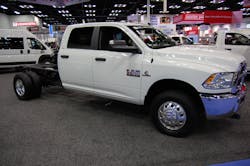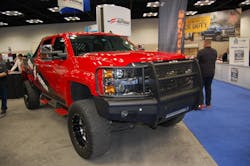The rollback of light vehicle fuel economy standards by the Trump administration is yet again putting the focus on determining whether regulatory activity truly benefits car and truck operators.
[Will Trump seek a similar rollback of the contentious Phase 2 greenhouse gas (GHG) rules that mandate fuel efficiency improvements for commercial vehicles and pickup trucks alike? That remains an unknown at this point.]
In that vein of inquiry, a new report issued by the International Council on Clean Transportation (ICTC) seeks to illuminate the costs and benefits of such mandatory fuel economy rules in the light vehicle arena.
And this comes at a critical time as even now the California Air Resources Board (CARB) is meeting this week to review the 2025 emission standards Trump is rolling back and to consider its own next steps – a move the ICTC said will impact the light vehicle market not just in California but 12 other states that hew to California’s clean car rules.
Altogether those 13 states represent over a third of the U.S. new car market, the group noted – nearly 6 million vehicles per year.
So after analyzing federal research and other “peer-reviewed” studies and new vehicle “modeling,” Nic Lutsey, ICCT’s program director and the lead author of its new report, believes the costs of meeting the 2025 fuel efficiency mandates being dumped by Trump are likely being overstated by as much as 40%.
“The technology and cost trends actually make setting even more stringent targets out to 2030 not only feasible, but desirable,” he noted in the report. “Because they would produce fuel cost savings to consumers two or even three times the technology costs per vehicle.”
OK, here’s how ICTC said it reached this conclusion. First it assessed increased “consumer label fuel economy ratings” that would rise from 26 mpg in 2016 to 35 mpg in 2025 and then to between 42 and 46 mpg by 2030. Those fuel economy levels are achieved based on sustained 4% to 6% annual reduction of fuel use per mile via “incremental technology additions” that do not compromise vehicle size or utility – resulting in “incremental costs” of an extra $800 to $1,300 per vehicle from 2025 to 2030.
Yet the “resulting trajectory” from such “incremental” advances – such as engine cylinder deactivation, the use of high-compression Atkinson cycle engines, light weighting efforts, and mild hybridization – would increase fuel economy by more than 60% from 2016 through 2030, with light vehicle sticker prices only increasing 5% by 2030.
ICTC added that, for the broader market context, between 2011 and 2016 automobile fuel economy increased by 14% and auto sales jumped by more than 40% – all while vehicle footprint and power remained approximately the same.
The thing is the average cost of light vehicles keeps going up. J.D. Power noted that in December last year the average new-vehicle retail transaction hit $32,000 – a record for the month – surpassing the previous high of $31,849 set in December 2015.On top of that, J.D. Power said annual retail sales expenditures set a record at $438 billion, surpassing the previous record of $436 billion set in 2015. Can consumers keep reaching that deeply into their wallets?
And sticker price increases are not just for fuel economy-related improvements, either. For example, OEMs are pushing connectivity heavily and that’s also helping boost base sticker prices for light vehicles across the board.
Then you’ve got the surge in sales of “premium” grade light trucks to consumers, too; vehicles that, though they are much more fuel efficient when compared to past models, are obviously not the equals in fuel economy when measured against their compact car brethren.
Yet even with Trump’s rollback of light vehicle fuel economy rules, the demand for greater fuel efficiency isn’t going away, for trucking companies and everyday motorists alike desire an ever-better fuel economy footprint for a simple reason: it saves them money.
Now the challenge is to see if that demand remains firm without the backing of federal regulations.


